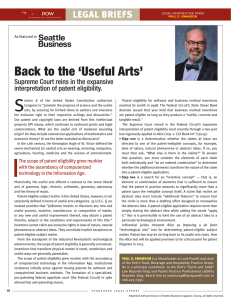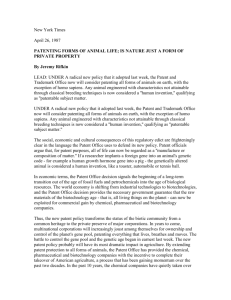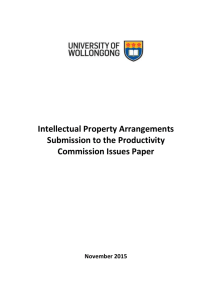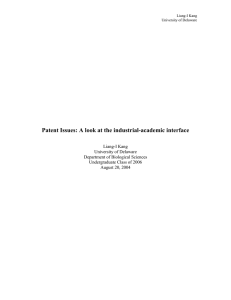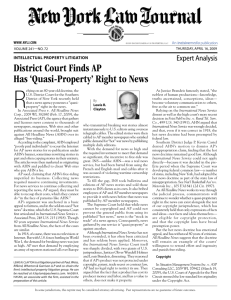Scientific Complexity & Patent Eligibility
advertisement
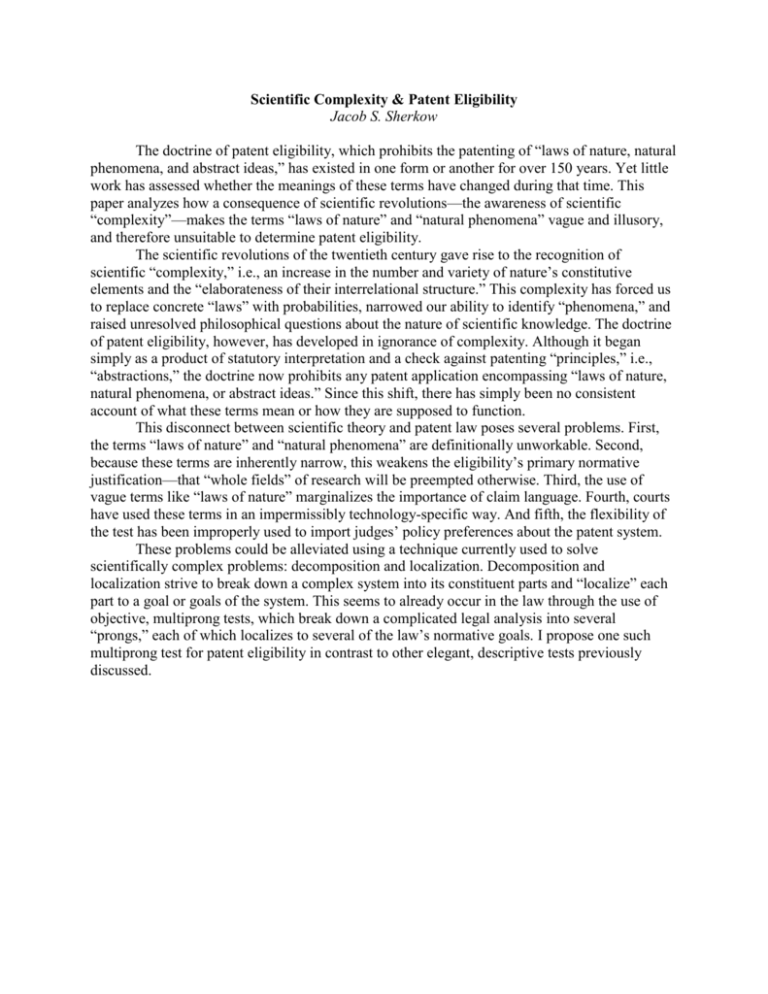
Scientific Complexity & Patent Eligibility Jacob S. Sherkow The doctrine of patent eligibility, which prohibits the patenting of “laws of nature, natural phenomena, and abstract ideas,” has existed in one form or another for over 150 years. Yet little work has assessed whether the meanings of these terms have changed during that time. This paper analyzes how a consequence of scientific revolutions—the awareness of scientific “complexity”—makes the terms “laws of nature” and “natural phenomena” vague and illusory, and therefore unsuitable to determine patent eligibility. The scientific revolutions of the twentieth century gave rise to the recognition of scientific “complexity,” i.e., an increase in the number and variety of nature’s constitutive elements and the “elaborateness of their interrelational structure.” This complexity has forced us to replace concrete “laws” with probabilities, narrowed our ability to identify “phenomena,” and raised unresolved philosophical questions about the nature of scientific knowledge. The doctrine of patent eligibility, however, has developed in ignorance of complexity. Although it began simply as a product of statutory interpretation and a check against patenting “principles,” i.e., “abstractions,” the doctrine now prohibits any patent application encompassing “laws of nature, natural phenomena, or abstract ideas.” Since this shift, there has simply been no consistent account of what these terms mean or how they are supposed to function. This disconnect between scientific theory and patent law poses several problems. First, the terms “laws of nature” and “natural phenomena” are definitionally unworkable. Second, because these terms are inherently narrow, this weakens the eligibility’s primary normative justification—that “whole fields” of research will be preempted otherwise. Third, the use of vague terms like “laws of nature” marginalizes the importance of claim language. Fourth, courts have used these terms in an impermissibly technology-specific way. And fifth, the flexibility of the test has been improperly used to import judges’ policy preferences about the patent system. These problems could be alleviated using a technique currently used to solve scientifically complex problems: decomposition and localization. Decomposition and localization strive to break down a complex system into its constituent parts and “localize” each part to a goal or goals of the system. This seems to already occur in the law through the use of objective, multiprong tests, which break down a complicated legal analysis into several “prongs,” each of which localizes to several of the law’s normative goals. I propose one such multiprong test for patent eligibility in contrast to other elegant, descriptive tests previously discussed.


